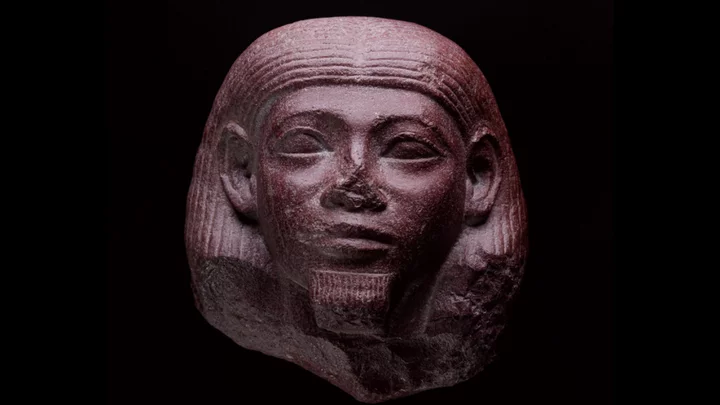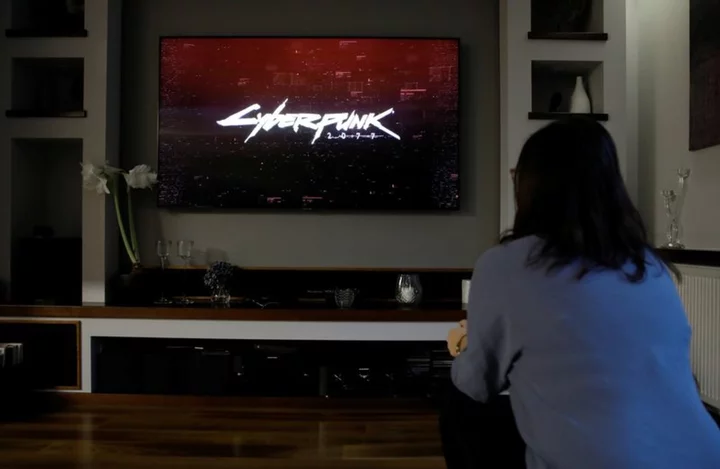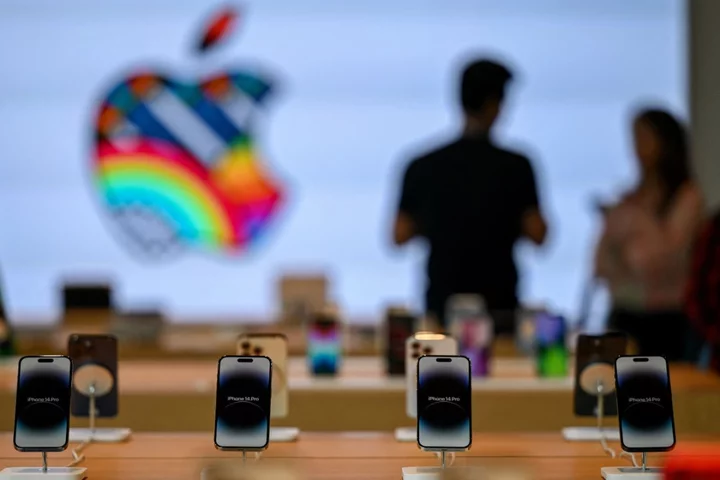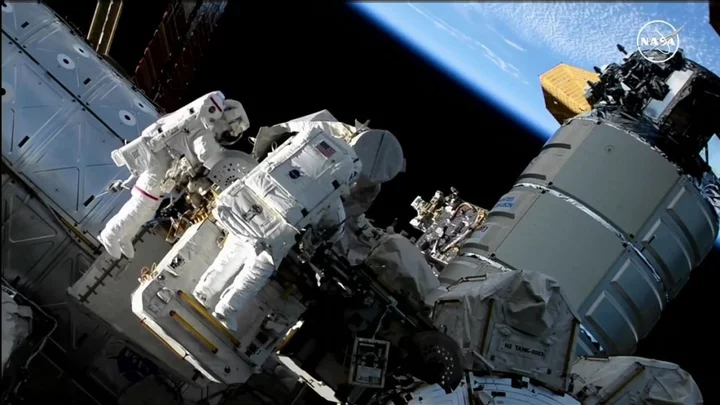
How to predict your 2023 Spotify Wrapped
It's almost that time of year again, when we see how many hours we've shamelessly spent listening to mortifying music and just playing Taylor Swift on loop. Yes, Spotify Wrapped is almost here again and soon you social media feeds will be full of people either showing you how cool by how much Senegalese lounge Jazz they listen to or embarrassed that they still haven't moved on from The Libertines or The Strokes. Each and every year, even for the most dedicated of music lovers, Spotify Wrapped throws up countless surprises in your top artists and songs leading many to question just how it tallies what you listen to. With the big day somewhere on the horizon (it arrived on November 30 in 2022 and December 1 in 2021) music nerds are curious to know what their Wrapped will look like for 2023. Spotify have never officially said how they compile their data for Wrapped but a Reddit user in 2021 revealed how they believed it works. In the post Hudsonlovestech pointed out six key takeaways that they discovered after downloading their data from the music platform. They were: This year the data was logged from January 1st 00:00 to November 15th 23:59. You have to listen to a song for more than 30 seconds for it to count in your song rankings. Your top songs are calculated by play count rather than total time listened. In your top 100 playlist only the first 10 songs are sorted by play count, the rest are close but sorted by artist. Your total time listening includes podcasts. Your top artists are calculated by total play counts rather than total time listening. If you apply this date to your own listening history then there is a chance you might discover what your Wrapped will look like this year although there is no guarantee. Meanwhile, many users on X/Twitter are posting memes, imagining what their Wrapped will look like this year. To be honest, we're just dreading seeing how much we listened to Ryan Gosling sing 'I'm Just Ken' from the Barbie soundtrack. Sign up to our free indy100 weekly newsletter Have your say in our news democracy. Click the upvote icon at the top of the page to help raise this article through the indy100 rankings.
2023-11-29 03:21

How a Scottish boy digging for potatoes found an ancient Egyptian 'masterpiece'
For decades, archaeologists have been trying to work out how a trove of ancient Egyptian artefacts were buried in the grounds of a school in Scotland. In 1952, a schoolboy was sent to dig up potatoes as a punishment – how times have changed – when he found a statue. It turned out to be a masterpiece made some 4,000 years ago. Fourteen years later, more treasure was discovered by a boy during a PE class, before, in 1984, a group found another item with a metal detector. It turned out to be part of a set of 18 antiquities dug up over the next 30 years at Melville House, a historic building in Fife, Scotland. But nobody had any idea how they got there. Now, researchers think they might have unearthed what was going on. Alexander Lesie-Melville was a young heir to Melville House when he travelled to Egypt in 1856. A year later, he had returned to Scotland and died. Leslie-Melville might have picked up the collection on his travels – it certainly beats the Duty Free section at Heathrow – as antique dealers routinely sold ancient artefacts to rich foreigners during that period. After Leslie-Melville died, family members are thought to have moved the objects to an outbuilding, where they were promptly forgotten about. The outbuilding was then demolished. Margaret Maitland, principal curator of the Ancient Mediterranean at National Museums Scotland where most of the objects are housed, said: “The discovery of ancient Egyptian artifacts that had been buried in Scotland for over a hundred years is evidence of the scale of 19th century antiquities collecting and its complex history.” “It was an exciting challenge to research and identify such a diverse range of artefacts.” Dr Elizabeth Goring, who has since investigated the site, said: “Excavating and researching these finds at Melville House has been the most unusual project in my archaeological career, and I’m delighted to now be telling the story in full." The full story will be published in an upcoming article in the journal Proceedings of the Society of Antiquaries of Scotland. How to join the indy100's free WhatsApp channel Sign up to our free indy100 weekly newsletter Have your say in our news democracy. Click the upvote icon at the top of the page to help raise this article through the indy100 rankings.
2023-11-29 02:25

Poland's CD Projekt posts 105% third-quarter profit jump
GDANSK Poland's biggest video game developer CD Projekt's third-quarter net profit jumped 105% year on year, it said
2023-11-29 00:55

Police spread baseless panic with warning over new iPhone feature
Police across the US have sent out privacy warnings over a new iPhone feature added in the latest Apple update. But the tool – called NameDrop – is a simple way of sharing personal information with consent, and includes a number of protections to ensure that data is not stolen. In a host of warnings from law enforcement, shared largely across Facebook, police departments warn about a possible “privacy” concern from the NameDrop feature, which arrived in iOS 17. The warning was shared by a range of different law enforcement authorities on Facebook, right across the country. It appears to have caught on over the Thanksgiving weekend. It notes that the feature defaults to being on, which is true. But it also suggests that “many people do not check their settings and realise how their phone works” and suggest there is something dangerous about the fact that you can “share your contact information by being next to another iPhone”. As such, it warns that people should turn the feature off by default and do the same for their children. It is true that the feature allows two devices to share contact information when they are next to each other. But they must be right next to each other, rather than simply close – and that is just one of a range of protections built into the feature. Chief among them is that users must specifically unlock their phone and also explicitly opt in to share their data with anyone, rather than it being able to send information on its own. NameDrop was introduced earlier this summer, as part of a number of changes to the way that contacts and sharing work in iOS 17. It is intended to make it easy to quickly share details with someone just by putting your phones near each other, and in so doing avoid having to read out numbers or other more complicated processes. It is used by simply placing two iPhones, two Apple Watches or a combination of the two together. If the devices are unlocked, and then placed within a few centimetres of each other, they will vibrate and glow to the show that the connection is happening. Users are then given the option of what contact information they want to share, as well as what they want to leave out. That gives the option to share only a work number, for instance, or only an email address – or one user can opt out of sharing any data at all, and just receive it. Users then click again to share their details. It can also be cancelled at any time by just swiping from the bottom of the display. NameDrop can be turned off relatively easily if there any concern. That is done by opening the Settings app, clicking on “General” then “AirDrop” and choose the “Start Sharing By” option, where you can turn off the setting to do so by “Bringing Devices Together”. Read More Why Apple is working hard to break into its own iPhones Disney, Apple suspend ads on Musk’s X after he agrees with antisemitic tweet Apple to adopt system to improve texting between iPhones and Android devices
2023-11-29 00:24

Micron expects first-quarter gross margin to approach breakeven
(Reuters) -Memory chipmaker Micron Technology said on Tuesday it expects its first-quarter adjusted gross margin to approach breakeven due to
2023-11-28 22:26

US Cyber Monday sales hit record $12.4 billion on big discounts - report
(Reuters) -Deep discounts on everything from beauty products and toys to electronics have enticed U.S. shoppers to splurge on Christmas
2023-11-28 21:57

A terrifying thing happens to astronauts' fingernails on a spacewalk
Going on a spacewalk might sound like a lot of fun – but in reality it’s no walk in the park. From their muscles getting less dense all the way to erectile dysfunction, astronauts have to put up with all sorts of things going wrong with their body. And none more gross than what happens to their fingernails. Turns out they just fall right off. The technical term for this is onycholysis, and it has to do with how much – or how little – atmospheric pressure there is in space. Because there is so little ambient pressure in space, astronaut’s space suits need to be pressurised to keep the human body intact. But that’s not good for the hands, it turns out. “Injuries to the hands are common among astronauts who train for extravehicular activity (EVA),” says a 2015 conference paper by space specialists Wyle Laboratories. “When the gloves are pressurized, they restrict movement and create pressure points during tasks, sometimes resulting in pain, muscle fatigue, abrasions, and occasionally more severe injuries such as onycholysis. “Glove injuries, both anecdotal and recorded, have been reported during EVA training and flight persistently through NASA's history regardless of mission or glove model." A 2010 study looked at 232 hand injuries sustained by astronauts, and found that the wider your knuckle joints, the more likely you are to suffer in a space suit. The study suggested that because space suit gloves limit the mobility of these knuckles, the fingers then get put under more pressure. This, in turn, means less blood gets to the fingers, and risks onycholysis. Ouch. Work has been done to try to improve the design of space suit gloves, of course. One team found that the more tailored they were to each astronaut’s finger length the less likely they were to lose their fingernails. That’s no mean feat, however. These gloves are made of at least four layers: one which touches the skin, one which helps create the pressurised environment, another one which makes the pressure layer less stiff, and an outer layer which protects the astronaut from everything on the outside. Mercifully for NASA astronauts at least, they usually have their gloves fitted to each wearer, and with new space suit design moving forward each day, the number of injuries is decreasing. Nonetheless, it sounds like a trip to space is no time for a manicure. How to join the indy100's free WhatsApp channel Sign up to our free indy100 weekly newsletter Have your say in our news democracy. Click the upvote icon at the top of the page to help raise this article through the indy100 rankings.
2023-11-28 21:50

New research suggests dinosaurs were wiped out by more than just a meteorite
We’ve all been told the story of what wiped out the dinosaurs – a giant meteor careers down from the sky, crashes into Earth and bang! The rest is history. But what if that wasn’t the whole story? A new study suggests there may have been more to it than just an asteroid – and it involves climate change. A chain of huge volcanic eruptions which eventually cooled the planet an alarming amount may have been partially to blame, according to research. The study, published in Science Advances and co-authored by Don Baker, a professor in McGill University's Department of Earth and Planetary Sciences, suggests that this might be the case. The researchers looked into volcanic eruptions at the Deccan Traps, a huge, rugged plateau that formed when molten lava solidified and turned to rock. The plateau dates back to around 66-65m years ago, when magma from deep inside Earth erupted to the surface. That just so happens to be around the time when scientists think the dinosaurs met their demise. Baker’s team suggest that the eruptions produced a staggering 1m cubic kilometres of lava, which then turned into rock, which may have played a key role in cooling the global climate around 65m years ago. The scientists say it’s all to do with how much sulphur and fluorine was pumped into the atmosphere as a result of the eruptions. Incredibly, they found the event could have sparked a drop in temperature all around the world, dubbed a “volcanic winter”. Baker said: “Our research demonstrates that climatic conditions were almost certainly unstable, with repeated volcanic winters that could have lasted decades, prior to the extinction of the dinosaurs. “This instability would have made life difficult for all plants and animals and set the stage for the dinosaur extinction event. “Thus our work helps explain this significant extinction event that led to the rise of mammals and the evolution of our species.” The scientists worked it out using new chemical techniques developed at McGill to measure how much sulphur is in the rock formations which came about at the time, then from that, figuring out how much went into the atmosphere. The paper is titled “Recurring volcanic winters during the latest Cretaceous: Sulfur and fluorine budgets of Deccan Traps lavas.” How to join the indy100's free WhatsApp channel Sign up to our free indy100 weekly newsletter Have your say in our news democracy. Click the upvote icon at the top of the page to help raise this article through the indy100 rankings.
2023-11-28 21:25

Bitcoin mining could supercharge transition to renewables, study claims
Solar and wind energy installations could earn hundreds of millions of dollars by mining bitcoin during periods of excess electricity generation, according to a new study. Scientists from Cornell University in the US, who conducted the research, said setting up mining operations could reduce the environmental impact of cryptocurrency, while also providing revenue that could be reinvested in future renewable energy projects. “Profitability of a mining system hinges on periods of steady energy availability since renewable energy sources can vary significantly,” said Fengqi You, a professor of energy systems at Cornell University. “Therefore, it is important to site the mining farm strategically to maximise productivity.” The state with the most potential for setting up profitable crypto mining operations is Texas, according to the study, with 32 planned renewable projects capable of generating combined profits of $47 million. California, Colorado, Illinois, Iowa, Nevada and Virginia all showed potential, though setting up mining rigs presents a large initial cost. One way of incentivising such projects, Cornell doctoral student Apoorv Lal suggested, could be the introduction of new policies that provide economic rewards for mining bitcoin and other cryptocurrencies with clean energy ”These rewards can act as an incentive for miners to adopt clean energy sources, which can lead to combined positive effects on climate change mitigation, improved renewable power capacity, and additional profits during pre-commercial operation of wind and solar farms,” Mr Lal said. “We also recommend policies that encourage cryptocurrency-mining operations to return some of their profits back into infrastructure development. This would help create a self-sustaining cycle for renewable energy expansion.” Bitcoin has drawn criticism from environmentalists for the vast amounts of electricity required to support its network and mint new units of the cryptocurrency, with recent analysis from the University of Cambridge estimating that it uses roughly the same amount of electricity as Poland. The plummeting costs of renewable energy mean bitcoin miners are increasingly turning to solar, wind and hydro sources to power their operations. “In its current status, the infrastructure that supports the Bitcoin protocol cannot be sustained, but the beauty of the protocol is that the incentive structure will force miners to adopt the cheapest form of electricity, which in the near future will be renewable energy,” Don Wyper, COO of DigitalMint, told The Independent last year. The latest study, titled ‘From mining to mitigation: how bitcoin can support renewable energy development and climate action’, was published in the journal ACS Sustainable Chemistry & Engineering. Read More Bitcoin mining rate hits all-time high amid record-breaking prediction for 2024 Nasa has received a signal from 10 million miles away Scientists reveal surprise finding from huge study into internet and mental health Nasa has received a signal from 10 million miles away Scientists reveal surprise finding from huge study into internet and mental health Software firm Cloudsmith announces £8.8m investment
2023-11-28 20:53

UK regulator says Adobe's $20 billion Figma deal could harm sector
(Reuters) -Britain's competition regulator said on Tuesday Photoshop owner Adobe's $20 billion buyout of cloud-based designer platform Figma could harm
2023-11-28 20:51

Atos considers sale of additional assets
IT service provider Atos said on Tuesday it was considering the sale of additional assets to address the
2023-11-28 16:49

Exclusive-Meta Platforms' paid ad-free service targeted in Austrian privacy complaint
By Foo Yun Chee BRUSSELS Meta Platforms' paid no-ads subscription service launched in Europe this month faced one
2023-11-28 14:20
